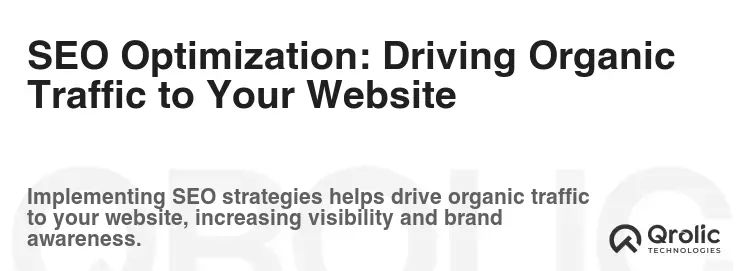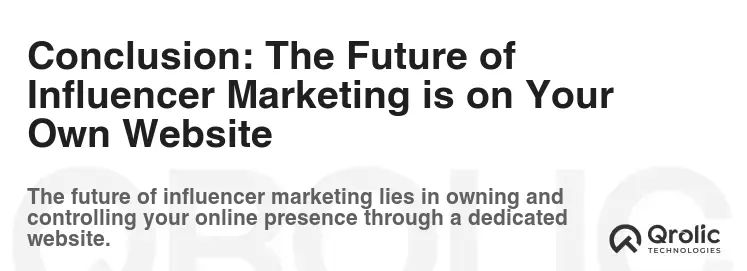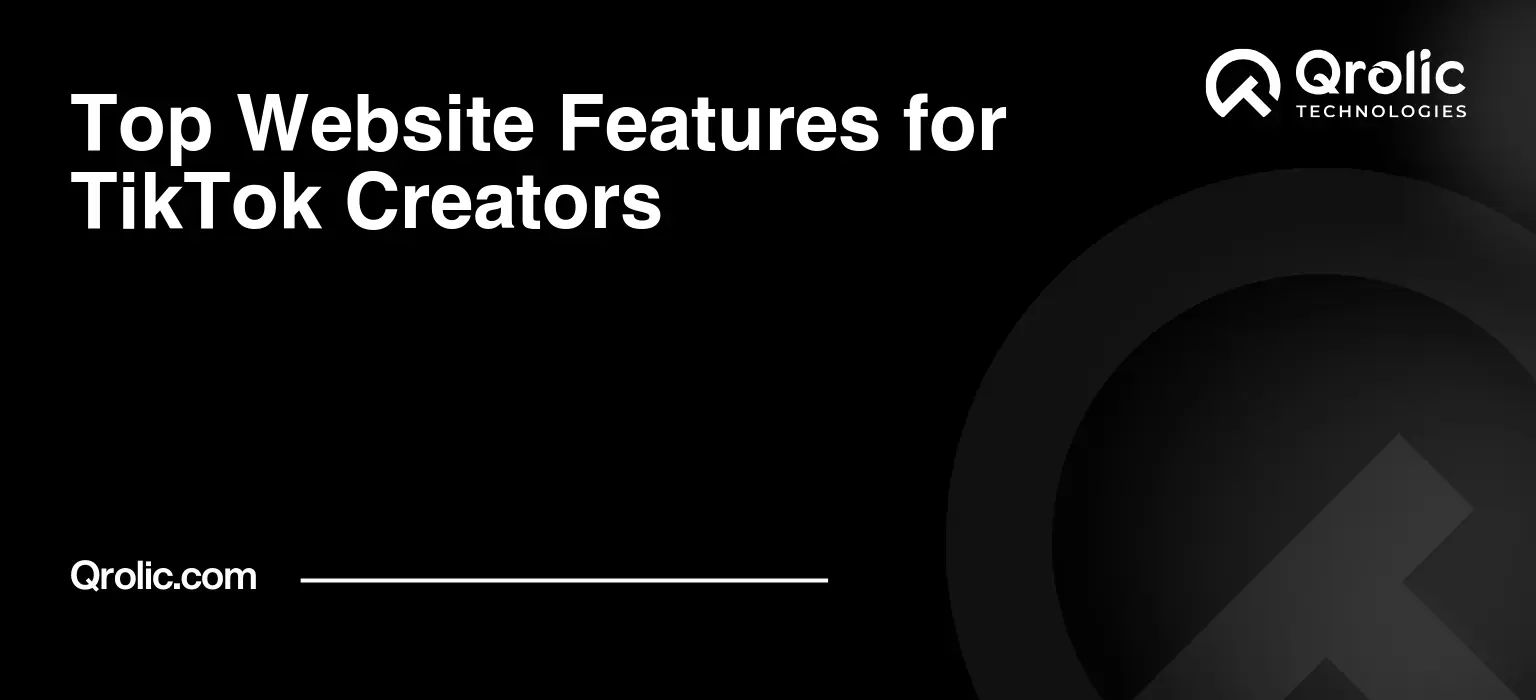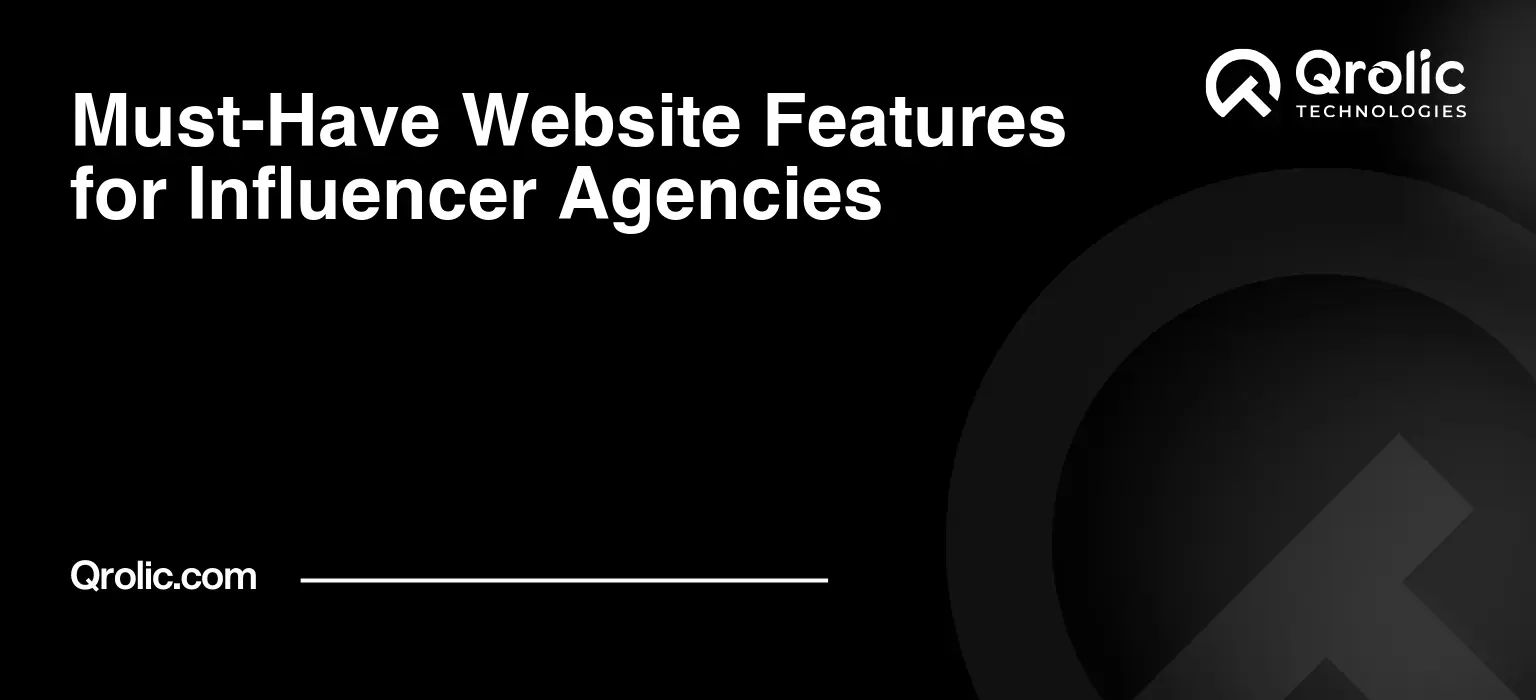Quick Summary:
- Your website gives full brand control.
- Centralize all content, monetize directly.
- Good design and SEO attract audience.
Table of Contents
- Building Your Empire: Why a Personal Brand Website is Non-Negotiable
- The Limitations of Social Media: Why You Need More
- Taking Control: Benefits of Owning Your Own Website
- Building the Ultimate Content Hub: Features to Showcase Your Creativity
- Core Features for Showcasing Your Content
- Advanced Features for Enhanced User Experience
- Seamless Social Integration: Connecting Your Website to Your Social Presence
- Key Social Integration Features
- Integrating Social Media into Your Content Strategy
- Monetization Strategies: Turning Your Website into a Revenue-Generating Machine
- Proven Monetization Methods for Influencers & Creators
- Optimizing Your Website for Conversions
- The Power of a Well-Designed Website: Aesthetics, Functionality, and User Experience
- Essential Design Principles for Influencer Websites
- Optimizing User Experience for Engagement and Conversions
- SEO Optimization: Driving Organic Traffic to Your Website
- Core SEO Strategies for Influencer Websites
- Advanced SEO Techniques for Increased Visibility
- Qrolic Technologies: Your Partner in Building a Powerful Personal Brand Website
- How Qrolic Technologies Can Help You
- Why Choose Qrolic Technologies?
- Get Started Today
- Conclusion: The Future of Influencer Marketing is on Your Own Website
Building Your Empire: Why a Personal Brand Website is Non-Negotiable

For influencers and creators in today’s digital landscape, relying solely on social media platforms is like building a house on rented land. You’re at the mercy of algorithms, changing policies, and the whims of a company you don’t control. A personal brand website offers something invaluable: ownership, control, and longevity. It’s the foundation upon which you build a sustainable, thriving career. Think of it as your digital headquarters – the central hub for everything you create and everything you represent.
The Limitations of Social Media: Why You Need More
Social media is fantastic for discovery and engagement, but it lacks crucial features for building a true brand:
- Limited Customization: Your profile is dictated by the platform’s design. You can’t truly express your unique brand identity.
- Algorithm Dependence: Visibility fluctuates wildly. Reaching your audience is a constant battle against the algorithm.
- Data Control: You don’t own your audience data. The platform does. This limits your ability to personalize experiences and build lasting relationships.
- Brand Dilution: You’re competing for attention alongside countless other creators and brands. Your message can easily get lost.
- Lack of Direct Monetization: Relying solely on platform monetization can be precarious. Your income is tied to their rules and payouts.
A personal brand website solves these problems, offering a space where you’re in charge.
Taking Control: Benefits of Owning Your Own Website
Investing in a well-designed website reaps significant rewards:
- Complete Brand Control: Express your unique personality, values, and aesthetic without limitations.
- Algorithm Independence: Attract visitors directly through search engines and your own marketing efforts.
- Audience Data Ownership: Collect valuable insights about your audience and personalize your content and offers.
- Enhanced Credibility: A professional website instantly elevates your brand and establishes you as an authority in your niche.
- Diversified Monetization: Sell products, courses, memberships, and services directly to your audience.
- Long-Term Asset: Your website is a valuable asset that grows in value over time, building your brand equity.
- Centralized Hub: Direct all your social media traffic to your website, creating a seamless and consistent brand experience.
- SEO Powerhouse: Optimize your website for search engines to attract a consistent stream of organic traffic.
Ultimately, a personal brand website empowers you to build a sustainable, profitable business that’s not dependent on the ever-changing landscape of social media.
Building the Ultimate Content Hub: Features to Showcase Your Creativity

Your website is your content hub – the place where all your creative work converges. It should be a dynamic, engaging space that showcases your talent, attracts new followers, and keeps existing fans coming back for more.
Core Features for Showcasing Your Content
These are the essential features to include in your content hub:
- Blog: The cornerstone of your content strategy. Share articles, tutorials, behind-the-scenes content, and industry insights.
- Why it Matters: Drives organic traffic through SEO, establishes you as an expert, and provides valuable content for your audience.
- Best Practices: Regularly update with high-quality, engaging content. Optimize for relevant keywords. Encourage comments and interaction.
- Example: A makeup influencer’s blog could feature tutorials, product reviews, and articles on skincare.
- Portfolio: A visually appealing display of your best work. Include high-quality images, videos, and descriptions.
- Why it Matters: Showcases your talent and expertise to potential clients and collaborators.
- Best Practices: Organize your portfolio by category. Use clear and concise descriptions. Make it easy to browse and share.
- Example: A photographer’s portfolio should feature a curated selection of their best photographs, categorized by genre (e.g., portrait, landscape, wedding).
- Video Gallery: Embed your videos from YouTube, Vimeo, or other platforms.
- Why it Matters: Makes it easy for visitors to watch your videos without leaving your website.
- Best Practices: Organize your videos into playlists. Use engaging thumbnails and descriptions. Optimize for search engines.
- Example: A travel vlogger’s video gallery could feature videos from their recent trips, organized by destination.
- Podcast Page: Host your podcast episodes directly on your website.
- Why it Matters: Provides a central location for listeners to access your podcast.
- Best Practices: Embed your podcast player. Provide show notes and transcripts. Encourage listeners to subscribe and leave reviews.
- Example: A business coach’s podcast page could feature episodes on topics like leadership, marketing, and personal development.
- Downloadable Resources: Offer free or paid downloads like ebooks, templates, guides, and checklists.
- Why it Matters: Generates leads, builds your email list, and provides valuable resources for your audience.
- Best Practices: Create high-quality resources that solve a specific problem. Promote your resources on social media and through email marketing.
- Example: A fitness influencer could offer a free workout plan or a paid ebook on healthy eating.
- Interactive Elements: Incorporate quizzes, polls, and surveys to engage your audience and gather valuable feedback.
- Why it Matters: Increases engagement, provides insights into your audience’s preferences, and makes your website more interactive.
- Best Practices: Create quizzes and polls that are relevant to your niche and audience. Promote them on social media and through email marketing.
- Example: A food blogger could create a quiz to determine what type of cuisine someone should try next.
Advanced Features for Enhanced User Experience
To take your content hub to the next level, consider these advanced features:
- Membership Area: Offer exclusive content, courses, and community access to paying members.
- Why it Matters: Creates a recurring revenue stream, fosters a loyal community, and provides exclusive value to your most dedicated fans.
- Best Practices: Offer valuable content and resources that are not available elsewhere. Create a strong sense of community. Provide excellent customer support.
- Example: A yoga instructor could offer a membership area with access to exclusive yoga classes, meditation sessions, and a private online forum.
- Online Courses: Create and sell online courses on your area of expertise.
- Why it Matters: Generates a significant revenue stream, establishes you as an expert, and helps your audience achieve their goals.
- Best Practices: Create high-quality courses that are well-structured and engaging. Offer support and feedback to your students. Promote your courses on social media and through email marketing.
- Example: A graphic designer could create an online course on Adobe Photoshop or Illustrator.
- Forum/Community: Create a space for your audience to connect, share ideas, and support each other.
- Why it Matters: Fosters a strong sense of community, increases engagement, and provides valuable feedback.
- Best Practices: Moderate the forum to ensure a positive and respectful environment. Encourage active participation. Create regular discussion topics.
- Example: A parenting blogger could create a forum for parents to connect and share advice.
- Search Functionality: Implement a robust search function to help visitors easily find the content they’re looking for.
- Why it Matters: Improves user experience, makes it easier to find content, and reduces bounce rate.
- Best Practices: Use a powerful search engine plugin or service. Optimize your content for search engines.
- Personalized Recommendations: Suggest relevant content to visitors based on their browsing history and interests.
- Why it Matters: Increases engagement, drives traffic to other content, and improves user experience.
- Best Practices: Use a personalization engine that analyzes user behavior. Recommend content that is relevant and interesting.
By incorporating these features, you can create a content hub that is engaging, informative, and valuable for your audience.
Seamless Social Integration: Connecting Your Website to Your Social Presence

Your website and social media should work together harmoniously to create a cohesive brand experience. Social integration is crucial for driving traffic to your website, promoting your content, and engaging with your audience.
Key Social Integration Features
These are the essential social integration features to include on your website:
- Social Sharing Buttons: Make it easy for visitors to share your content on their social media profiles.
- Why it Matters: Increases brand awareness, drives traffic to your website, and promotes your content.
- Best Practices: Use prominent and visually appealing social sharing buttons. Include buttons for all the major social media platforms. Track your social sharing metrics to see which platforms are driving the most traffic.
- Example: Add social sharing buttons to your blog posts, portfolio pages, and product pages.
- Social Media Feeds: Embed your social media feeds on your website to showcase your latest posts.
- Why it Matters: Keeps your website content fresh and engaging, promotes your social media presence, and encourages visitors to follow you on social media.
- Best Practices: Use a visually appealing social media feed plugin or service. Choose a feed layout that complements your website design. Display your most engaging content.
- Example: Embed your Instagram feed on your homepage or sidebar.
- Social Login: Allow visitors to log in to your website using their social media accounts.
- Why it Matters: Simplifies the login process, increases user engagement, and provides valuable data about your audience.
- Best Practices: Use a secure and reliable social login plugin or service. Clearly explain how you will use the data collected through social login.
- Example: Allow visitors to log in to your membership area using their Facebook or Google accounts.
- Social Commenting: Allow visitors to comment on your blog posts and other content using their social media accounts.
- Why it Matters: Encourages engagement, increases social sharing, and provides valuable feedback.
- Best Practices: Use a social commenting plugin or service that integrates with your social media platforms. Moderate the comments to ensure a positive and respectful environment.
- Example: Allow visitors to comment on your blog posts using their Facebook or Twitter accounts.
- Click-to-Tweet: Make it easy for visitors to share specific quotes or snippets of content on Twitter.
- Why it Matters: Increases social sharing, promotes your content, and drives traffic to your website.
- Best Practices: Use a click-to-tweet plugin or service that allows you to customize the tweet text. Choose compelling quotes and snippets that are likely to be shared.
- Example: Add click-to-tweet buttons to your blog posts, highlighting key takeaways and actionable tips.
Integrating Social Media into Your Content Strategy
Beyond simply adding social sharing buttons and feeds, consider these strategic approaches:
- Cross-Promotion: Promote your website content on your social media channels and vice versa.
- Why it Matters: Drives traffic to your website, increases brand awareness, and promotes your social media presence.
- Best Practices: Create a content calendar to plan your cross-promotion activities. Use compelling visuals and engaging captions. Track your results to see what works best.
- Example: Share a link to your latest blog post on Facebook and Twitter. Promote your social media profiles on your website.
- Social Contests and Giveaways: Run contests and giveaways on social media to drive traffic to your website.
- Why it Matters: Generates leads, increases brand awareness, and promotes your website.
- Best Practices: Choose a prize that is relevant to your niche and audience. Clearly define the rules of the contest. Promote the contest on social media and through email marketing.
- Example: Run a contest on Instagram where participants must follow your account and visit your website to enter.
- Influencer Collaboration: Partner with other influencers to promote your website and content.
- Why it Matters: Reaches a wider audience, increases brand awareness, and drives traffic to your website.
- Best Practices: Choose influencers who are relevant to your niche and audience. Clearly define the scope of the collaboration. Track your results to see what works best.
- Example: Partner with a fellow influencer to create a guest blog post for your website.
By integrating your website with your social media presence, you can create a powerful ecosystem that drives traffic, engagement, and brand growth.
Monetization Strategies: Turning Your Website into a Revenue-Generating Machine

Your personal brand website is not just a platform for showcasing your content; it’s also a powerful tool for generating revenue. By strategically implementing monetization strategies, you can turn your website into a profitable business.
Proven Monetization Methods for Influencers & Creators
Here are some effective ways to monetize your website:
- Affiliate Marketing: Promote other companies’ products or services and earn a commission on each sale.
- Why it Matters: Generates passive income, allows you to recommend products you love, and diversifies your revenue stream.
- Best Practices: Choose products that are relevant to your niche and audience. Be transparent about your affiliate relationships. Provide honest and unbiased reviews.
- Example: Review makeup products on your blog and include affiliate links to purchase them.
- Selling Digital Products: Create and sell digital products like ebooks, templates, courses, and presets.
- Why it Matters: Generates high-profit margins, allows you to share your expertise, and provides valuable resources for your audience.
- Best Practices: Create high-quality products that solve a specific problem. Promote your products on social media and through email marketing. Offer excellent customer support.
- Example: Sell an ebook on healthy eating or a set of Lightroom presets.
- Selling Physical Products: Sell physical products like merchandise, apparel, and accessories.
- Why it Matters: Creates a tangible connection with your audience, generates revenue, and promotes your brand.
- Best Practices: Choose products that are relevant to your niche and audience. Offer high-quality products that are well-designed. Promote your products on social media and through email marketing.
- Example: Sell t-shirts with your logo or slogan, or create a line of branded accessories.
- Sponsored Content: Partner with brands to create sponsored blog posts, videos, and social media content.
- Why it Matters: Generates a significant revenue stream, allows you to work with brands you love, and promotes your content to a wider audience.
- Best Practices: Choose brands that are relevant to your niche and audience. Be transparent about your sponsored content. Create high-quality content that aligns with your brand and the brand you’re partnering with.
- Example: Create a sponsored video reviewing a new product or service.
- Membership Programs: Offer exclusive content, courses, and community access to paying members.
- Why it Matters: Creates a recurring revenue stream, fosters a loyal community, and provides exclusive value to your most dedicated fans.
- Best Practices: Offer valuable content and resources that are not available elsewhere. Create a strong sense of community. Provide excellent customer support.
- Example: Offer a membership program with access to exclusive yoga classes, meditation sessions, and a private online forum.
- Online Courses: Create and sell online courses on your area of expertise.
- Why it Matters: Generates a significant revenue stream, establishes you as an expert, and helps your audience achieve their goals.
- Best Practices: Create high-quality courses that are well-structured and engaging. Offer support and feedback to your students. Promote your courses on social media and through email marketing.
- Example: Create an online course on Adobe Photoshop or Illustrator.
- Services: Offer your services as a consultant, coach, or freelancer.
- Why it Matters: Generates a high income, allows you to use your skills and expertise, and helps others achieve their goals.
- Best Practices: Clearly define your services and pricing. Create a professional website and portfolio. Promote your services on social media and through networking.
- Example: Offer coaching services to help aspiring entrepreneurs or provide freelance writing services.
- Donations/Patreon: Allow your audience to support your work through donations or Patreon subscriptions.
- Why it Matters: Provides a direct way for your audience to support your work, allows you to create content without being beholden to advertisers, and fosters a stronger connection with your fans.
- Best Practices: Clearly explain why you’re asking for donations. Offer exclusive rewards to patrons. Regularly thank your supporters.
- Example: Create a Patreon page where fans can subscribe to support your work and receive exclusive content.
Optimizing Your Website for Conversions
To maximize your revenue potential, optimize your website for conversions:
- Clear Call-to-Actions: Use clear and compelling call-to-actions to guide visitors towards your desired actions.
- Why it Matters: Encourages visitors to take action, increases conversions, and improves user experience.
- Best Practices: Use strong action verbs. Make your call-to-actions visually appealing. Place your call-to-actions in prominent locations.
- Example: Use call-to-actions like “Buy Now,” “Download Now,” “Sign Up Now,” and “Learn More.”
- Compelling Sales Pages: Create compelling sales pages that highlight the benefits of your products or services.
- Why it Matters: Convinces visitors to make a purchase, increases conversions, and generates revenue.
- Best Practices: Use persuasive language. Highlight the benefits of your products or services. Include testimonials and social proof. Offer a money-back guarantee.
- Example: Create a sales page that explains how your online course will help students achieve their goals.
- Email Marketing: Build an email list and use email marketing to promote your products, services, and content.
- Why it Matters: Nurtures your audience, drives traffic to your website, and increases conversions.
- Best Practices: Offer a valuable freebie in exchange for email signups. Segment your email list based on interests and behavior. Send regular emails with valuable content and promotions.
- Example: Offer a free ebook in exchange for email signups. Send weekly emails with tips, advice, and exclusive offers.
- A/B Testing: Experiment with different elements on your website to see what works best for conversions.
- Why it Matters: Improves website performance, increases conversions, and maximizes revenue.
- Best Practices: Test one element at a time. Use a reliable A/B testing tool. Track your results and make data-driven decisions.
- Example: Test different headlines, images, and call-to-actions to see which ones generate the most conversions.
By implementing these monetization strategies and optimizing your website for conversions, you can turn your personal brand website into a thriving revenue-generating machine.
The Power of a Well-Designed Website: Aesthetics, Functionality, and User Experience

A visually appealing and user-friendly website is crucial for attracting and retaining visitors. A well-designed website not only enhances your brand image but also improves user experience, leading to increased engagement and conversions.
Essential Design Principles for Influencer Websites
These are the key design principles to keep in mind:
- Visual Appeal: Create a visually appealing website that reflects your brand identity.
- Why it Matters: Attracts visitors, enhances brand image, and creates a positive first impression.
- Best Practices: Use high-quality images and videos. Choose a color palette that reflects your brand. Use typography that is easy to read.
- Example: Use a minimalist design with clean lines and plenty of white space.
- User-Friendliness: Make your website easy to navigate and use.
- Why it Matters: Improves user experience, reduces bounce rate, and increases engagement.
- Best Practices: Use a clear and intuitive navigation menu. Make it easy to find content. Optimize your website for mobile devices.
- Example: Use a simple navigation menu with clear labels like “About,” “Blog,” “Portfolio,” and “Contact.”
- Mobile Optimization: Ensure your website is fully responsive and optimized for mobile devices.
- Why it Matters: Reaches a wider audience, improves user experience, and boosts SEO.
- Best Practices: Use a responsive design framework. Test your website on different mobile devices. Optimize images and videos for mobile.
- Example: Use a mobile-friendly theme or plugin.
- Fast Loading Speed: Optimize your website for fast loading speed.
- Why it Matters: Improves user experience, reduces bounce rate, and boosts SEO.
- Best Practices: Optimize images and videos. Use a caching plugin. Choose a reliable web hosting provider.
- Example: Use a CDN (Content Delivery Network) to deliver your website content faster.
- Accessibility: Make your website accessible to users with disabilities.
- Why it Matters: Reaches a wider audience, promotes inclusivity, and complies with accessibility standards.
- Best Practices: Use alt text for images. Provide captions for videos. Use sufficient color contrast.
- Example: Use a plugin to check your website for accessibility issues.
Optimizing User Experience for Engagement and Conversions
Beyond aesthetics, focus on these UX (User Experience) elements:
- Clear Value Proposition: Clearly communicate your value proposition on your homepage.
- Why it Matters: Tells visitors what you offer and why they should stay on your website.
- Best Practices: Use a concise and compelling headline. Highlight the benefits of your products or services. Include a clear call-to-action.
- Example: Use a headline like “Helping You Build a Successful Online Business.”
- Compelling Storytelling: Use storytelling to connect with your audience on an emotional level.
- Why it Matters: Creates a strong connection with your audience, builds trust, and enhances brand loyalty.
- Best Practices: Share your personal story. Use relatable language and imagery. Focus on the emotional benefits of your products or services.
- Example: Share your journey as an entrepreneur or your experience overcoming challenges.
- Social Proof: Showcase testimonials, reviews, and social media mentions to build trust and credibility.
- Why it Matters: Builds trust, increases conversions, and enhances brand reputation.
- Best Practices: Display testimonials from satisfied customers. Showcase positive reviews from industry experts. Embed social media mentions on your website.
- Example: Display testimonials on your sales pages and product pages.
- Easy Contact Options: Make it easy for visitors to contact you.
- Why it Matters: Provides customer support, builds trust, and generates leads.
- Best Practices: Include a contact form on your website. Display your email address and phone number. Provide links to your social media profiles.
- Example: Create a dedicated contact page with a contact form and your contact information.
- Personalization: Personalize the user experience based on their interests and behavior.
- Why it Matters: Increases engagement, improves user experience, and drives conversions.
- Best Practices: Use a personalization engine to analyze user behavior. Recommend relevant content and products. Personalize email marketing messages.
- Example: Recommend blog posts based on a visitor’s browsing history.
By focusing on aesthetics, functionality, and user experience, you can create a website that attracts visitors, engages your audience, and drives conversions.
SEO Optimization: Driving Organic Traffic to Your Website

Search Engine Optimization (SEO) is crucial for driving organic traffic to your website. By optimizing your website for search engines, you can attract a consistent stream of visitors who are actively searching for content related to your niche.
Core SEO Strategies for Influencer Websites
These are the fundamental SEO strategies to implement:
- Keyword Research: Identify the keywords that your target audience is searching for.
- Why it Matters: Helps you create content that is relevant to your audience, drives organic traffic, and improves your search engine rankings.
- Best Practices: Use keyword research tools like Google Keyword Planner and Ahrefs. Focus on long-tail keywords. Analyze your competitors’ keywords.
- Example: Research keywords related to your niche, such as “makeup tutorials,” “travel tips,” or “personal finance advice.”
- On-Page Optimization: Optimize your website content for relevant keywords.
- Why it Matters: Improves your search engine rankings, drives organic traffic, and makes your website more visible.
- Best Practices: Use keywords in your titles, headings, and body text. Optimize your images with alt text. Use internal and external links.
- Example: Use relevant keywords in your blog post titles, headings, and meta descriptions.
- Content Marketing: Create high-quality, engaging content that is optimized for search engines.
- Why it Matters: Drives organic traffic, establishes you as an expert, and builds your brand reputation.
- Best Practices: Create a content calendar. Write informative and engaging blog posts. Create videos and infographics.
- Example: Create a blog post on “Top 10 Travel Destinations for Budget Travelers.”
- Link Building: Build high-quality backlinks from other websites.
- Why it Matters: Improves your search engine rankings, drives referral traffic, and increases your website’s authority.
- Best Practices: Create valuable content that other websites will want to link to. Guest blog on other websites. Participate in industry forums and communities.
- Example: Write a guest blog post for a popular travel blog.
- Technical SEO: Optimize your website’s technical aspects for search engines.
- Why it Matters: Improves your search engine rankings, makes your website more crawlable, and enhances user experience.
- Best Practices: Optimize your website for mobile devices. Improve your website’s loading speed. Create a sitemap and submit it to search engines.
- Example: Use a caching plugin to improve your website’s loading speed.
Advanced SEO Techniques for Increased Visibility
To further boost your SEO performance, consider these advanced techniques:
- Schema Markup: Implement schema markup to provide search engines with more information about your content.
- Why it Matters: Improves your search engine rankings, enhances your search results, and increases click-through rates.
- Best Practices: Use schema markup to describe your articles, products, events, and other types of content.
- Example: Use schema markup to tell search engines that a blog post is an article and to provide information about the author and publication date.
- Local SEO: Optimize your website for local search.
- Why it Matters: Drives traffic from local customers, improves your visibility in local search results, and generates leads.
- Best Practices: Claim and optimize your Google My Business listing. Use local keywords in your website content. Build citations from local directories.
- Example: Claim your Google My Business listing and add your business name, address, and phone number.
- Image Optimization: Optimize your images for search engines.
- Why it Matters: Improves your search engine rankings, drives traffic from image search, and enhances user experience.
- Best Practices: Use descriptive file names. Add alt text to your images. Optimize your images for mobile devices.
- Example: Use a descriptive file name like “best-makeup-tutorial.jpg” for an image in a makeup tutorial blog post.
- Video SEO: Optimize your videos for search engines.
- Why it Matters: Improves your search engine rankings, drives traffic from video search, and enhances user engagement.
- Best Practices: Use descriptive titles and descriptions. Add tags to your videos. Create engaging thumbnails.
- Example: Use a descriptive title like “How to Create a Smokey Eye Makeup Look” for a makeup tutorial video.
- Website Analytics: Track your website traffic and SEO performance using Google Analytics and Google Search Console.
- Why it Matters: Provides valuable insights into your website’s performance, helps you identify areas for improvement, and measures the effectiveness of your SEO efforts.
- Best Practices: Set up Google Analytics and Google Search Console. Track your website traffic, keyword rankings, and backlinks. Analyze your data and make data-driven decisions.
- Example: Track your website traffic to see which blog posts are driving the most traffic.
By implementing these SEO strategies, you can significantly increase your website’s visibility in search engines and drive a consistent stream of organic traffic.
Qrolic Technologies: Your Partner in Building a Powerful Personal Brand Website

At Qrolic Technologies (https://qrolic.com/), we understand the unique needs of influencers and creators. We specialize in developing custom websites that are not only visually stunning but also strategically designed to drive engagement, build your brand, and generate revenue.
How Qrolic Technologies Can Help You
- Custom Website Design: We create bespoke website designs that perfectly reflect your brand identity and aesthetic.
- Content Management Systems (CMS): We build your website on a user-friendly CMS like wordpress, making it easy for you to manage your content.
- SEO Optimization: We optimize your website for search engines to attract a consistent stream of organic traffic.
- Social Integration: We seamlessly integrate your website with your social media platforms to create a cohesive brand experience.
- E-commerce Solutions: We help you set up an online store to sell your products, services, and digital downloads.
- Membership Site Development: We build membership sites that allow you to offer exclusive content and courses to paying members.
- Ongoing Support and Maintenance: We provide ongoing support and maintenance to ensure your website is always running smoothly.
Why Choose Qrolic Technologies?
- Expertise: We have a team of experienced web designers and developers who are passionate about helping influencers and creators succeed.
- Custom Solutions: We don’t believe in one-size-fits-all solutions. We create custom websites that are tailored to your specific needs and goals.
- Results-Driven Approach: We are focused on delivering results. We track your website’s performance and make data-driven decisions to improve your results.
- Exceptional Customer Service: We are committed to providing exceptional customer service. We are always available to answer your questions and provide support.
- Affordable Pricing: We offer competitive pricing to make our services accessible to influencers and creators of all sizes.
Get Started Today
Contact Qrolic Technologies today to discuss your website needs and get a free quote. Let us help you build a powerful personal brand website that will take your career to the next level. Visit us at https://qrolic.com/ to learn more.
Conclusion: The Future of Influencer Marketing is on Your Own Website

In conclusion, a personal brand website is no longer optional for influencers and creators; it’s essential. It’s the foundation upon which you build a sustainable, profitable business that’s not dependent on the whims of social media platforms. By investing in a well-designed, SEO-optimized website with engaging content and seamless social integration, you can take control of your brand, connect with your audience, and unlock your full potential. Embrace the power of your own website and watch your influence soar. Remember to leverage the expertise of companies like Qrolic Technologies to ensure your website is a true reflection of your brand and a powerful tool for growth.









